My dad walked back to the car, frowning. “Well, unfortunately it looks like we’re gonna have to go birding somewhere else today.”
I sighed, frustrated. We’d been trying to bird Swiftcurrent, in east Glacier National Park, for years, and we’d still never gotten a normal birding session there. Most years it had been closed, like it was today, because of COVID-19 or construction. The year we had gotten to bird, it had been pouring down rain, and while we scored an incredible experience with a pair of Harlequin Ducks in Lake Swiftcurrent, those were basically the only birds was saw. Now, not birding Swiftcurrent drastically decreased our chances at Boreal Chickadee, a bird we’d been wanting to find for as long as I could remember.
Reviewing our options, we could just immediately head south and hope to bird Two Medicine, and possibly arrive in West Glacier earlier than expected to look for Black Swift and Harlequin Duck. I wanted to go somewhere new, however, so we headed north towards the closed Canadian border crossing. Hopefully we could find some cool habitat, possibly with Boreal Chickadees, though that species had rarely been reported from that area of the park. Along with it being a cool bird, the main reason my dad and I wanted the chickadee so badly is because in terms of Montana lifers we’d been completely skunked during the rest of our trip, missing American Golden-Plover, Broad-winged Hawk, Magnolia Warbler and more. We’d gotten cool birds, like Sprague’s Pipit, but none of them had been new species for us.
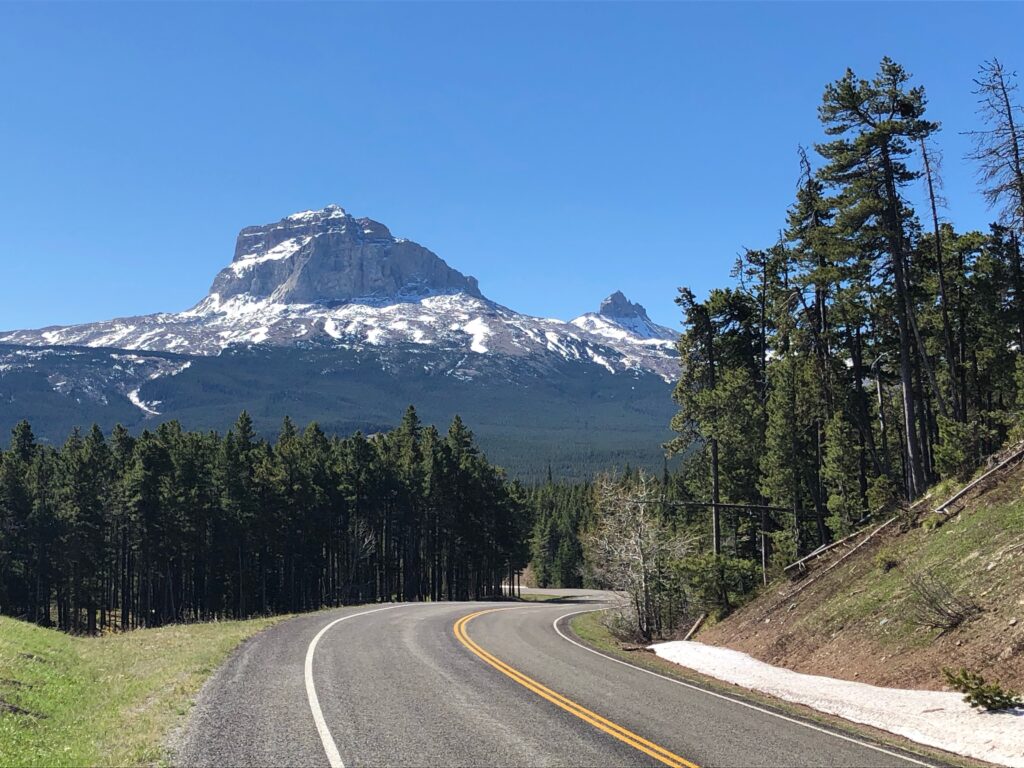
After taking a short loop through the most desolate plains we’d seen yet in Montana, we turned towards Glacier’s mountains again. As we drove, the habitat shifted, first to stunted aspen forest and then tall, dense spruce-fir forest. It was a habitat I’d never seen in the state, if at all: the southernmost reaches of the vast boreal forest that stretched across Canada. As we crossed back into the national park, my dad spotted what was probably a robin, but we pulled over anyway—I was excited to see what birds were singing from this new habitat.
A Northern Waterthrush echoed from the side of the car as we got out, and several Brown-headed Cowbirds whistled from the tops of trees. Every single bird was a surprise to us, since we really had no idea what to expect. And despite the fact that we hadn’t truly entered the mountains yet, my dad’s altitude app told us that we were at more than 5000 feet!
Suddenly my dad turned around. “I just heard a chickadee.” I spotted something flit to the top of a tall spruce about fifty feet away, and raised my binoculars. While it was still too far to tell what kind, I was definitely staring at a chickadee, so I grabbed my camera from the car and hurried over to where there appeared to be a pair of them. Once we drew closer, I raised my binoculars, registering salmon flanks and a brown cap.
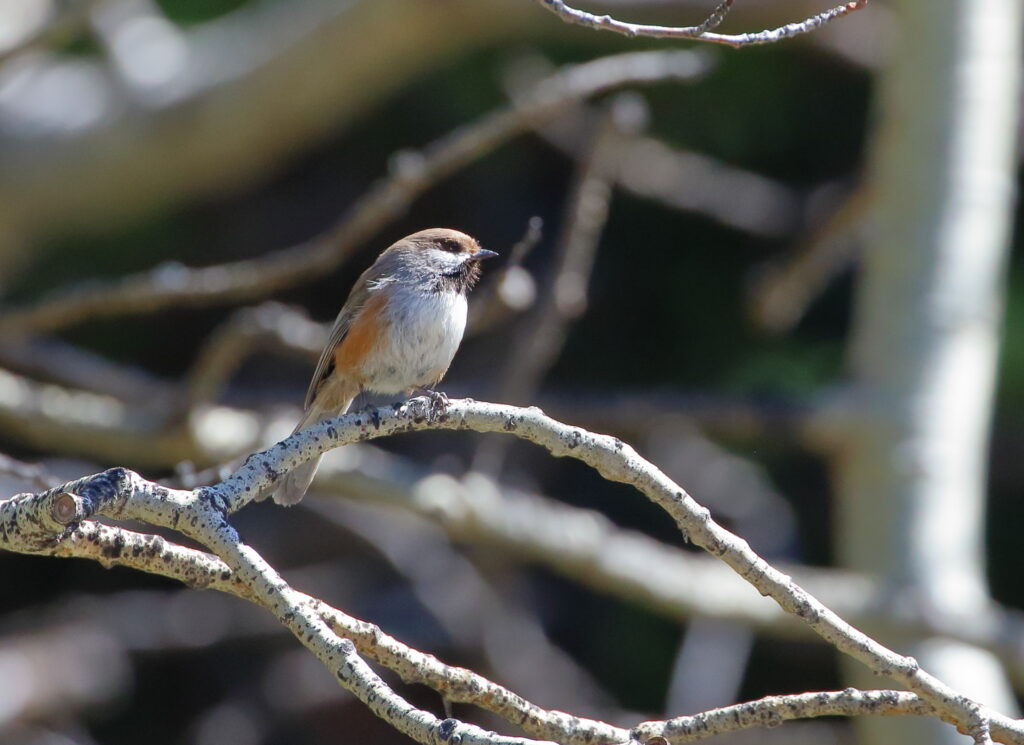
It was one of if not the first time I’d ever said the F-word in front of my dad! It was like my brain had exploded, I’m not sure whether from the fact that the birds were Boreal Chickadees or from the fact that we’d managed to find a new Montana species at last on this trip. The chickadees bounced around the spruces for a while, then disappeared.
After recovering from the shock, my dad and I hugged and got back in the car, intent on seeing what else we could find along this paved-yet-empty road. Starting at the closed Canadian border crossing, we drove south doing five-minute point counts along the road like we’d done searching for Sprague’s Pipit the day before.
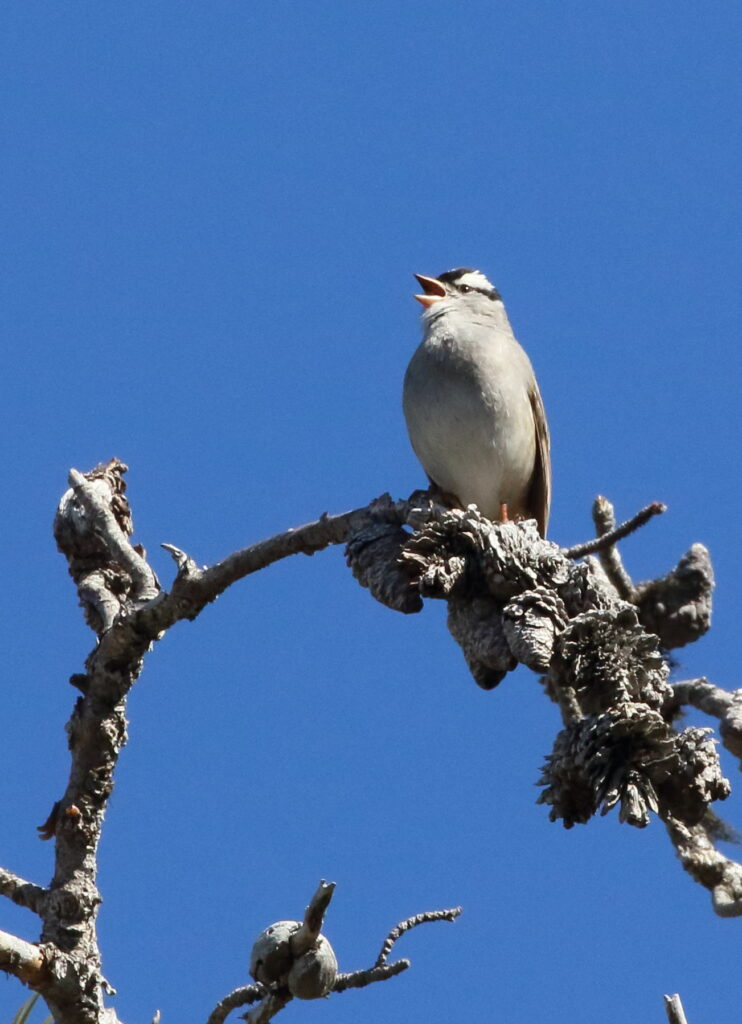
The most common sparrows were White-crowned Sparrows belting confusing songs from every level of the trees, and while Yellow and Yellow-rumped Warblers were present, they were at least equalled in number by Wilson’s Warblers and Northern Waterthrushes, neither of which were common in Missoula. Amazingly, we picked up Boreal Chickadee at two more points, getting much better looks and photos of three more pairs. They were one of the more common species here, too, and were by far the most common chickadee, though we also picked up a lone Mountain and a possible Black-capped, the latter from a lower altitude aspen area. Canada Jay was the most common corvid, though we also saw a single Steller’s. Another treat were two boisterous Olive-sided Flycatchers, well-known boreal forest breeders, calling and posing for us.
In the wetter areas we found Fox and Lincoln’s Sparrows, Tree Swallows and Warbling Vireos. Red-breasted Nuthatches, Ruby-crowned Kinglets, Pine Siskins and Chipping Sparrows greeted us at most stops. We also got a Varied Thrush, which was a surprise as we were probably about two miles from the easternmost limit of its breeding range.
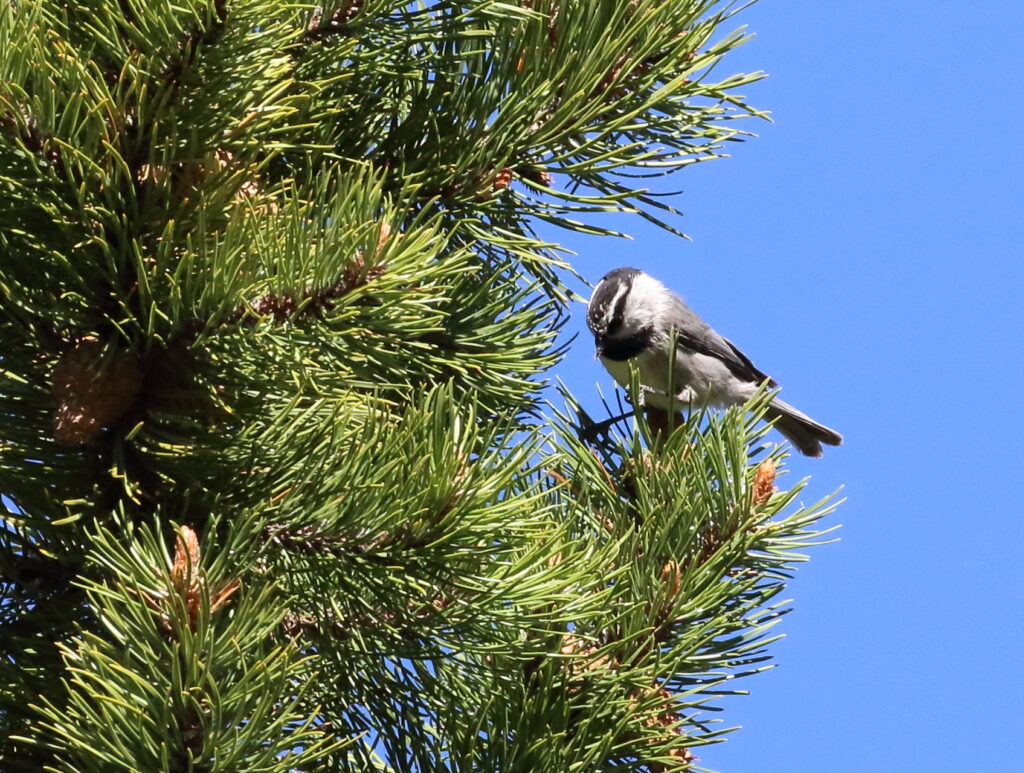
I’d recently read a book about the lack of birds in the boreal forest, and while there definitely was lower diversity than say, the wet second-growth of West Glacier, it was not as if there weren’t any birds. At most stops we picked up at least three or four species singing or calling.
After drinking our fill of the boreal forest and saying goodbye to the chickadees, we headed south along the eastern edge of Glacier National Park. We stopped at a good-looking, alder-filled riparian area for lunch, picking up new species for the day like Black-headed Grosbeak, Lazuli Bunting and our first-of-year MacGillivray’s Warbler, then got onto Highway 2 again, back in familiar territory.
When we reached West Glacier, though, we discovered something tragic—you had to have a permit to enter the park, a new rule they’d employed to counter the insane surges of tourists they’d had the past few years! Thankfully, we could enter without a permit after 5 p.m., but still it was sad that the days of entering Glacier easily may be over.
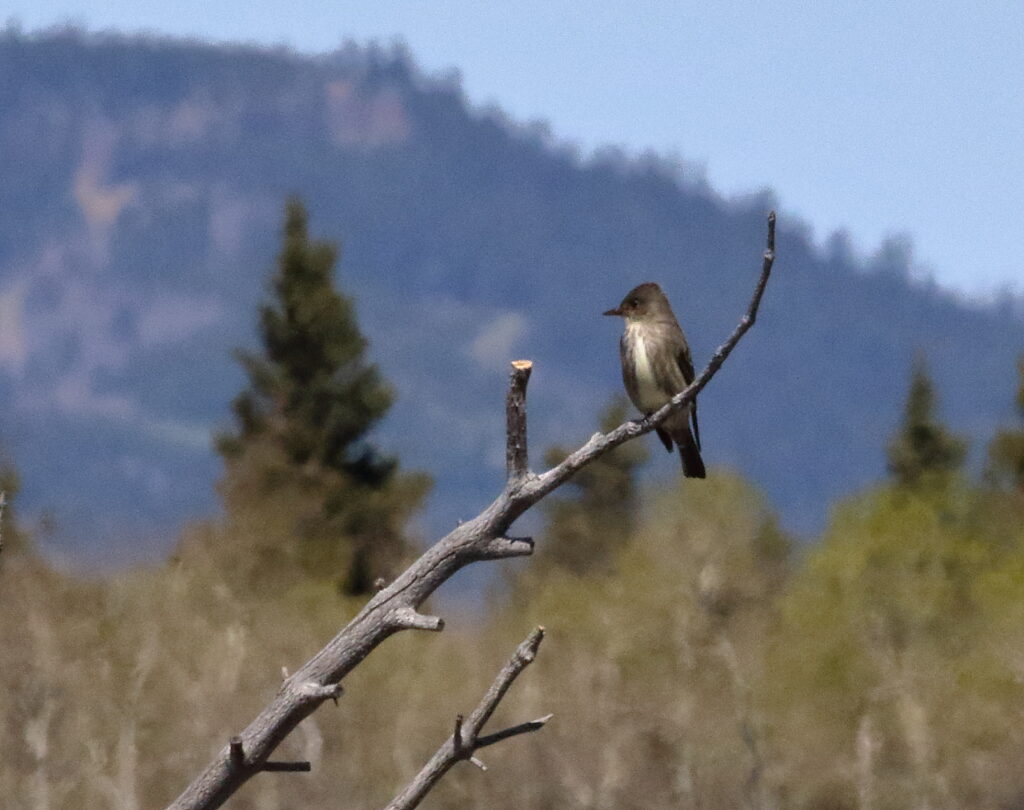
We parked by the old park entrance to wait until five o’ clock, and while my dad took a nap I wandered around the healthy mountain-riparian forest along the milk-blue Middle Fork of the Flathead River. As I hiked, I suddenly heard more chickadees calling, and in a dense patch of Lodgepole Pine I found them: Chestnut-backed Chickadees!
Earlier in the day, after seeing the Boreal Chickadees, I’d mentioned to my dad: “Just you wait. We’ll somehow manage to see three of the four chickadee species and have trouble finding a Black-capped.” Black-capped, of course, is well-known for being not only the most common chickadee in Montana but also one of the most common birds here, period.
Suddenly, my fear had come true: I’d seen the three most difficult chickadees in one day, but had not yet seen a Black-capped (while again, we’d possibly heard one up by the Canadian border, it had not been a positive identification so we hadn’t counted it). I rushed back to the car to wake my dad.
“Let’s go find some cottonwoods. I need to see a Black-capped Chickadee.”
As we drove around West Glacier (the town; the park hadn’t opened yet), I rolled down my windows, straining to hear any piece of a chickadee call. We pulled into a fishing access parking lot surrounded by cottonwoods and began walking, though the birds were fairly quiet. Four in the afternoon was about as bad a time as you could go birding, yet here we were, trying to find one that we saw in our backyard every single day. I promised to myself that if we found a Black-capped, I would memorize its scientific name, Poecile Atricapillus.
After admiring a gorgeous male Rufous Hummingbird that posed for us, I heard a chickadee call from behind me. Then, a sharp-looking Black-capped flew towards us, landing mere inches from us on a branch! I’d done it! I restrained myself from hugging the chickadee and instead gave my dad a high-five in celebration of the Quad-Chickadee Day I’d had—or, as my dad officially christened it, “the Quach.”
Note: “Quach” is a registered trademark of FatherSonBirding, legally protected throughout the solar system. Anyone using it will be subject to massive fines and stern looks. Not really. But you heard it here first!


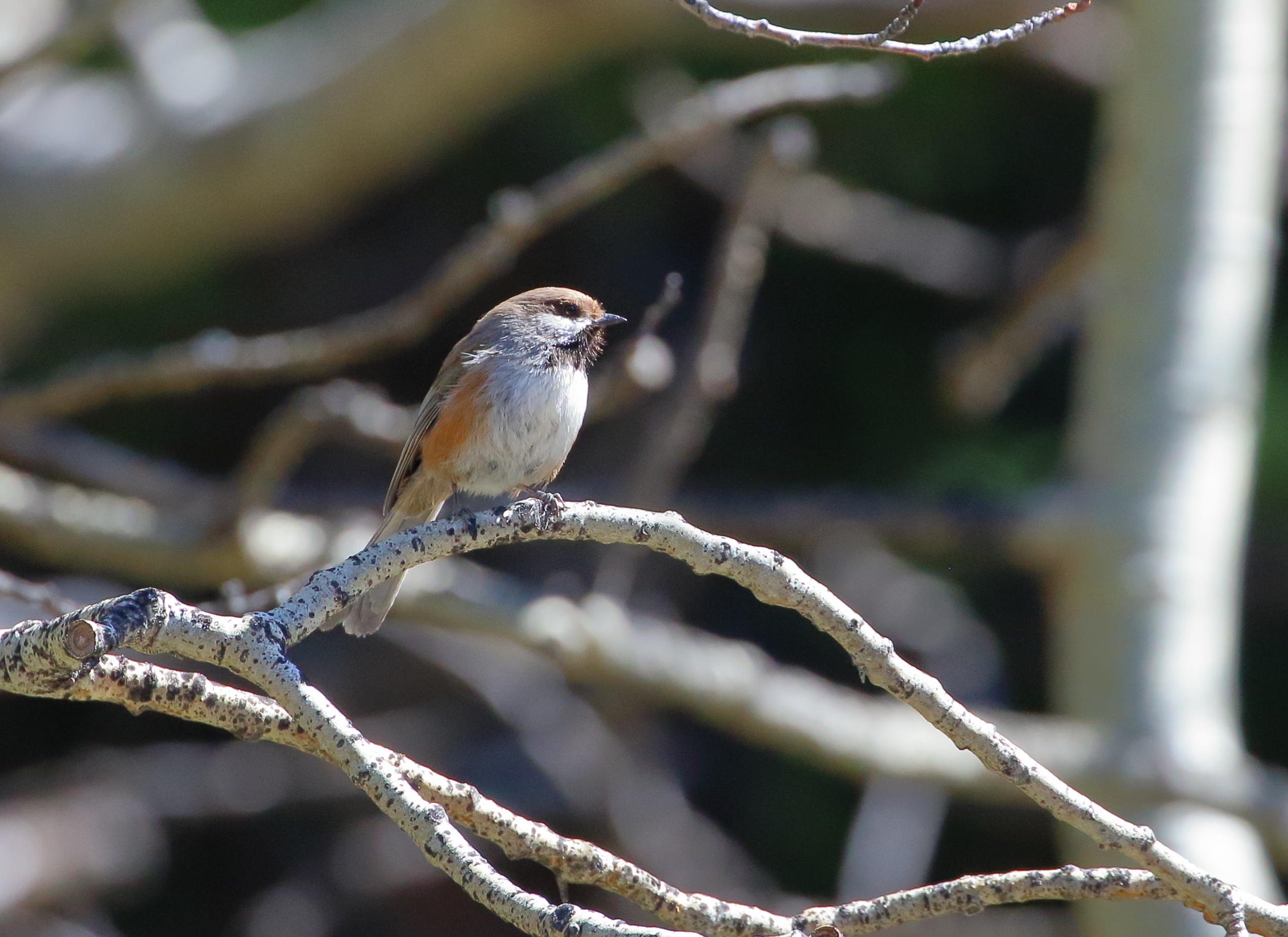
So to re(black)cap, your old man christened the chickadee the Quach, taking his inspiration from Sasquach, the mythical man-ape hybrid that is never seen (because it doesn’t exist). Then, to try to deceive the public, you guys edit a photo of a Chestnut-backed in Photoshop, and try to pass it off as a Black-capped. Hoax! HOAX! How dumb do you think your readers are?! That old man of yours will do ANYTHING for a good bird story. But I know his “tell”: HE heard the Boreal chickadee. Yeah, right. I’m on to you, old man! ;-]
But seriously, what an adventure. Congrats on the Quad Chickadee outing. So the Boreal was a Lifer for both of you?
I have enjoyed all of your posts from your last big road trip. Two adventurous birding dudes, out on the road!
Hey, who are you calling OLD??? Oh, me? Well, okay, then. I just couldn’t hear you with my bad ears.
Anyway, glad you liked Braden’s account, Roger. Finding that road almost empty really was an amazing experience, and to see so many BOCHs was unforgettable.
And yes, it was a Lifer for both of us.
Now, we need only Mexican Chickadee from Arizona and POSSIBLY Gray-headed from Alaska, though that one looks to now be extinct there (but still very common in Asia and Europe).
We will bag that Mexican species in Sonora next spring, amigo!
You know it, Baby!
Loved this tale from my neck of the woods. The Boreal has eluded me.
Thank you, George! So glad you enjoyed it–and good luck with that Boreal!
Wonderful story!
But you included a photo labeled: “Seeing a White-throated Sparrow on its alpine breeding grounds gave us new appreciation for this relatively common species.”
That sure looks like a White-crowned Sparrow to me.
Thanks for sharing your adventure.
Robin
Oops! Thanks for catching that, Robin! I always say one when I mean the other 🙂
This is truly a fine story to describe how nuts birders can become. Yet, it is, without argument, a beautiful nuttiness. When I first saw the article title, I said to myself, “There’s not a bird called a Quach. (Is there???)” Not only did you hook me into reading the article, but you confronted me with the possibility that life was demanding that I learn something new. I shuddered, I questioned my intelligence, and I scoured corners in the drawers of my bed stand for Xanax to ease the anxiety. “I’m over 60! When will it stop?! Something new!!!” My heart returned to normal rhythms once I realized Quach was a Sneedism for quad chickadee day. Thank goodness.
I can only imagine the things that you, Braden, son of Sneed, must have been forced to overcome during your young life…
What a joy to see the joy of birding shared between father, and son. Thank you for sharing your adventures, experience, and mostly, AVIAN ENTHUSIASM. The world needs more families passionate about birds and our beautiful earth. I am going to share this with my students.
Hi Shaunna! Thanks so much for your kind comments. Birding truly is a gift and Braden and I have been blessed to share it together. Please give your students our best. New post tommorrow!